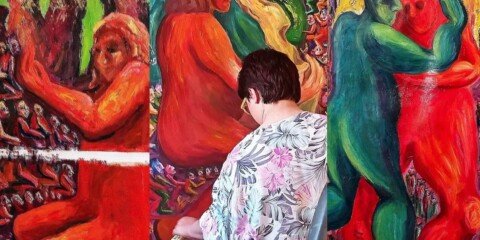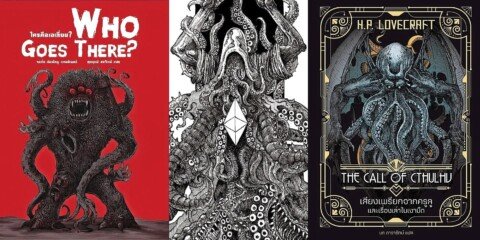Clara Woods is not only a painter. She is a talented storyteller who speaks through riotous color, bold shape, and deep, deep emotion. As an artist who cannot read, write, or talk because of a prenatal stroke, Clara has located her mighty voice on a canvas, which began when a paintbrush first clicked into her hand. The remarkable family adventure stirred with a daringly early dream that was inspired by her muse Frida Kahlo, leading to a tremendously successful debut exhibition in Florence.
In this exclusive interview, Betina -Clara’s mother- shares the extraordinary story behind the artist and the “Inclusion Matters Movement”, which the family firmly believes in regarding her precious gifts. Together, they tell us how Clara’s artwork is among the most powerful acts of communication, transcending language to impart strength, hope, and the glorious message that every person’s story counts. A wonderful reminder that art can turn what many perceive as limitations into strengths, and with love and courage, everything is possible.
Through her painting, Clara strengthens not only herself but also everyone around her, both near and far, while spreading inspiration across the world.
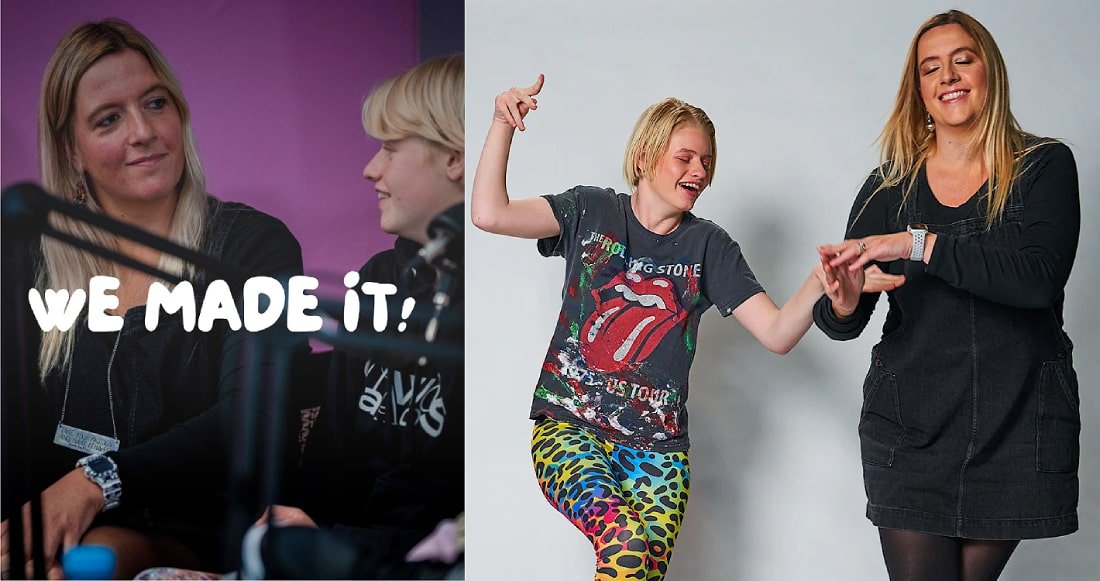
🟥 Could you share a bit about Clara’s background and the journey that led her to becoming an artist?
Hi, I’m Betina, Clara’s mom, and I’ll be answering this question today on her behalf.
Clara was born with a perinatal stroke, which made life more challenging for her. She can’t speak, read, or write, and for years we tried many different activities and sports, but nothing really fit. Then one day she picked up a paintbrush, and something just clicked. At first, she would even cover her paintings in black paint because she wasn’t happy with them, but little by little she began to use colors and shapes, and art became her way of communicating what she couldn’t say with words.
In 2018, when Clara was just 12, she told me she wanted to have her first exhibition, inspired by Frida Kahlo. We organized it in Florence, and to our surprise, it was a huge success. That moment made it clear that art was more than just a hobby for her—it was her passion, her voice, and her way to inspire people.
Since then, Clara has painted over a thousand artworks, exhibited around the world, and grown into an artist and entrepreneur. As her mom, I never imagined stepping into the art world, but I became her business partner and biggest supporter. Together, we’ve built not only her career but also the Inclusion Matters Movement, because her story is about more than painting—it’s about resilience, hope, and showing that being different is powerful.
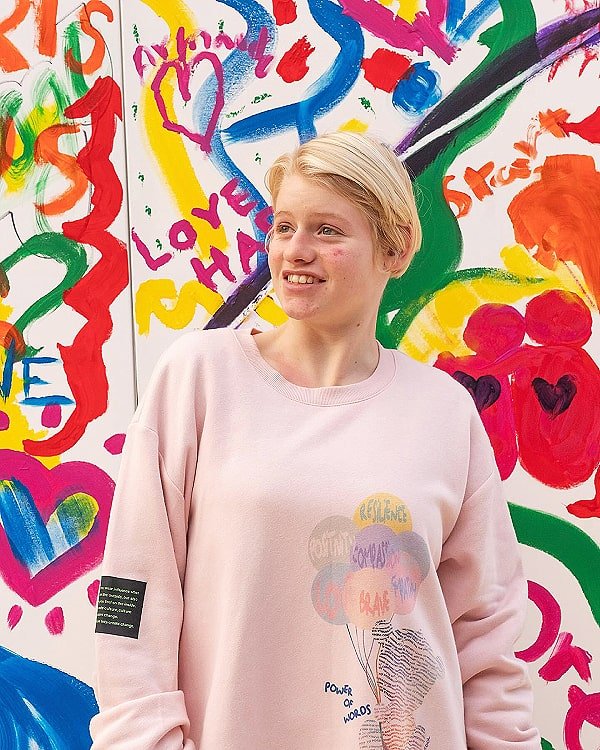

🟥 Was there a defining moment or experience that solidified your decision to pursue art seriously with Clara?
there wasn’t just one big “aha” moment—it really started as fun. Clara painted because it made her happy, and little by little, each step gave us a confirmation to keep going.
At the beginning, my focus was on the business side, building something meaningful with Clara for her future. But as time went on, it became so much bigger than that. We started to see how people connected deeply with Clara and her art—how they felt her energy, her story, her resilience through every brushstroke. That’s when it shifted. It was about sharing a message: that inclusion matters, that being different is powerful, and that art can touch hearts in ways words sometimes can’t.
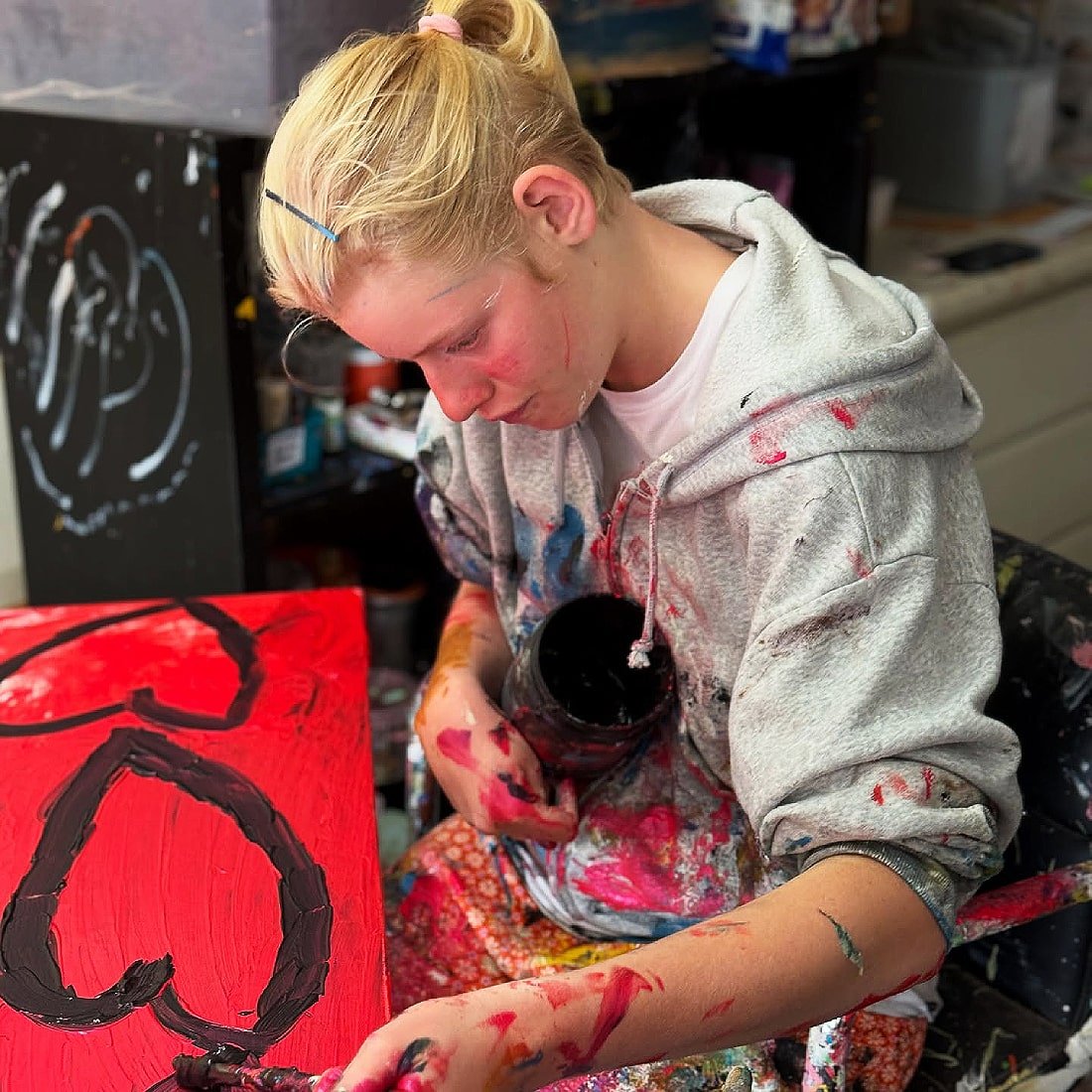
🟥 Do you remember the first piece of art Clara created, and what inspired her to make it?
We don’t remember the first piece Clara painted, but we do remember the first one she sold on Instagram—and that’s a story we’ll never forget.
It was this beautiful, a little abstract, whale that Clara painted for her brother. People on Instagram started asking if they could buy it, and Clara made a deal with him: she’d sell it and give him half of the money. We still laugh about that moment, and in a way, we regret letting it go because it was so special. That artwork was super cool, and it marked the start of something we didn’t even realize was going to change our lives.
🟥 What inspires Clara the most when she is creating her art?
Clara’s inspiration comes from her everyday life. It can be something simple that happened during the day, a TV show she watched, or just whatever is running through her mind in that moment. She doesn’t follow a plan—she paints what she feels, and that’s what makes her art so authentic.
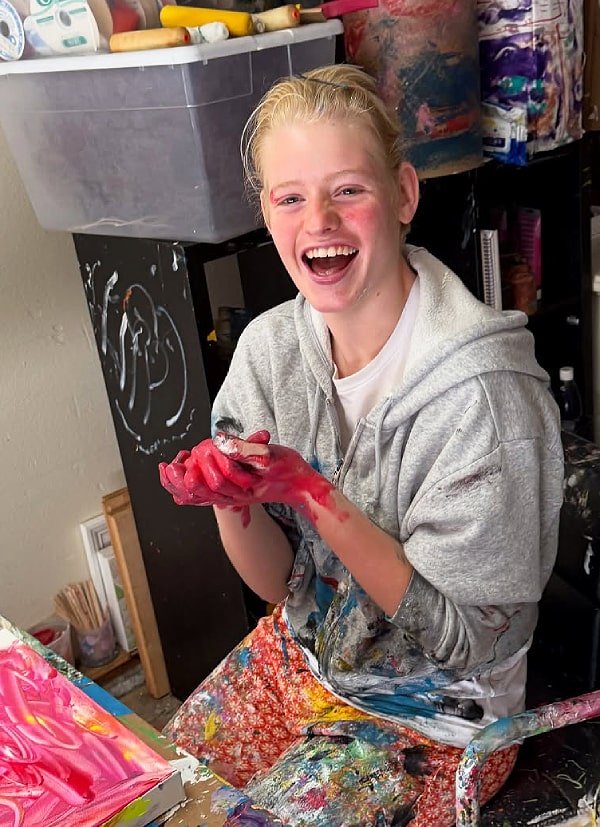
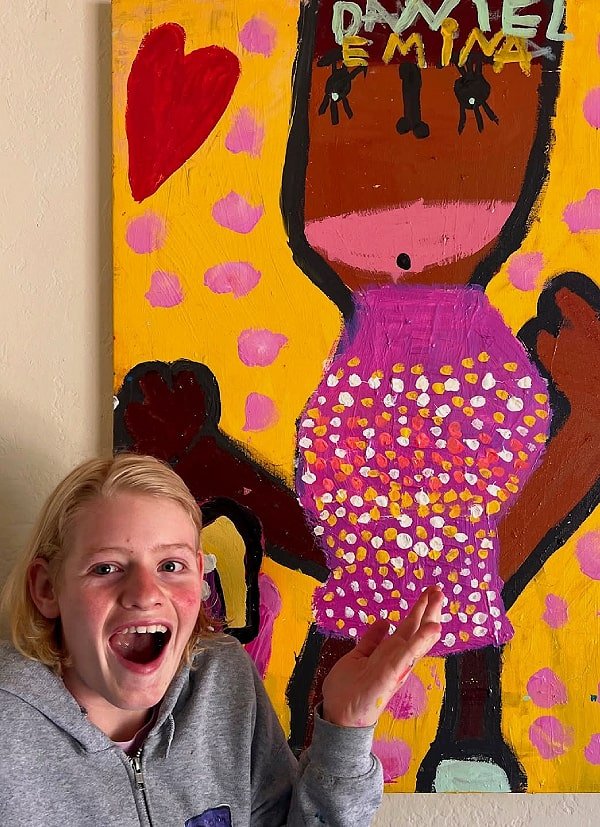
🟥 Are there specific activities, rituals, or moments that fuel Clara’s creativity?
Clara is a young woman full of joy, and her creativity comes from what’s happening in her life. She doesn’t need big rituals—her biggest fuel is ice cream. After a painting session, the promise of ice cream always makes her light up and keeps her motivated.
She also gets very inspired when she has special projects with a bigger meaning, like the artwork she created for the Olympic Games.
🟥 As someone so close to her work, how would you personally define art, and what deeper meaning do you believe it holds for Clara?
For me, art is powerful. It’s a way of saying things without words, of touching emotions that go deeper than language. When I look at Clara’s artworks, sometimes I feel like crying, other times I just laugh or feel surrounded by love. It speaks straight to the heart.
I can’t really answer this for Clara, but she always “tells” us in her own way that her studio is her happy place. It’s where she feels 100% herself and where she belongs.

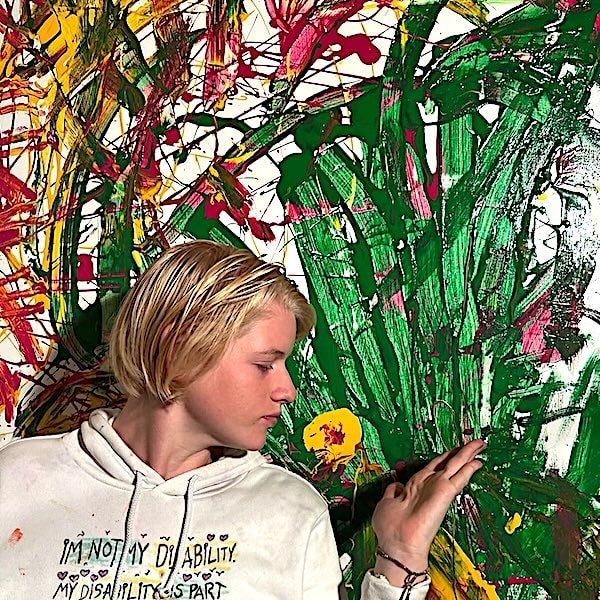
🟥 What part of the creative journey excites Clara the most—conceiving an idea, the act of creating, or finishing the piece?
Ah, this one really depends on the moment Clara is in. She loves the beginning—talking with clients and listening to their ideas. Then, during the creation, she can get a little anxious and worried about what people will think of the final piece. But when she gets their approval at the end, she’s over the moon.
Another part that excites her a lot is delivering the artwork. There’s a special connection in that moment, seeing the piece go to its new home and feeling the joy it brings to someone else.
🟥 Do you find that Clara follows a structured plan when creating art, or is her process more spontaneous?
Clara’s process is totally spontaneous, and that makes it super challenging for me to manage her career and sales. As a business, sometimes I really need structure—deadlines, planning, specific pieces—but 99% of the time I have to adapt to her rhythm and create everything around it. It’s not easy at all, but it’s completely worth it
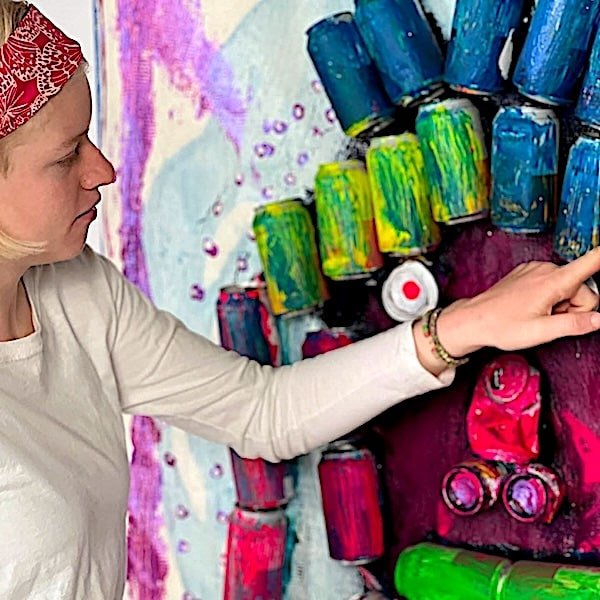
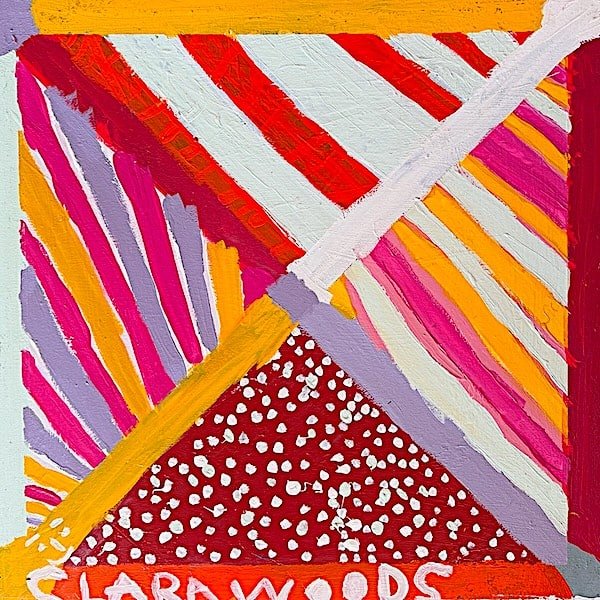
🟥 What time of day do you feel Clara is the most creative, and why do you think she prefers that time for her work?
Clara is definitely most creative in the morning—she’s fresh, full of energy, and ready to paint. Sometimes she’ll also get a spark after dinner, but that’s rare. Mornings are really her best time to dive into her art.
🟥 Does Clara listen to music while creating, and how do you feel it influences her process?
Yes, Clara usually listens to worship songs while she paints.
🟥 What keeps Clara motivated during times when creativity feels like a struggle?
I think for Clara is her wonderful community. They always show up for her. When she’s feeling sad, we share that, and people send comments, photos, even little gifts. We also have a WhatsApp group where I share everything with her, and with the help of her phone she can read the messages. That connection is life-changing—it reminds her she’s not alone and gives her the strength to keep creating.
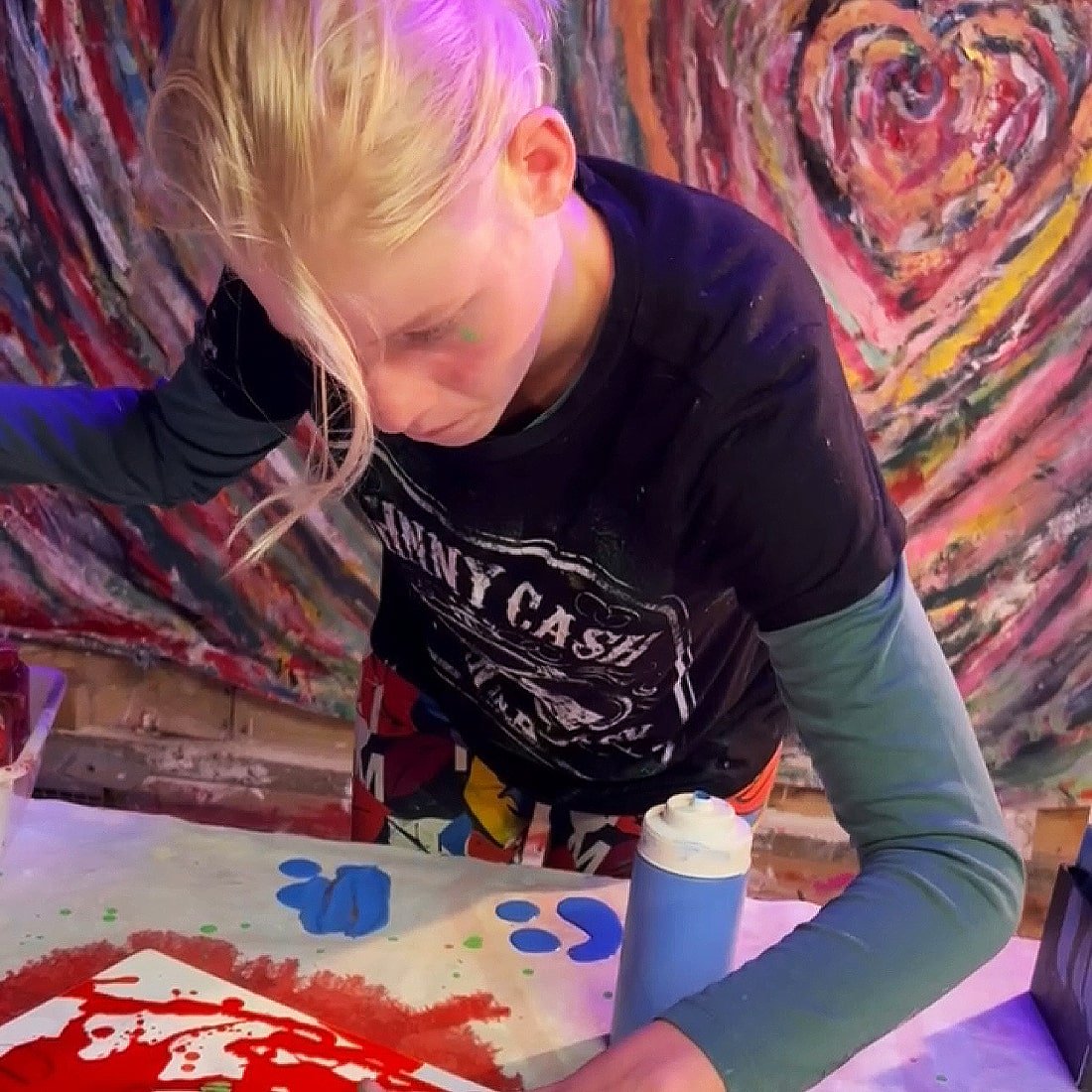
🟥 From your perspective, what are the non-negotiable essentials in Clara’s workspace?
For Clara, the non-negotiables in her workspace are simple but essential: lots of colors, plenty of acrylic paint, and canvases of all sizes. She needs to have everything around her so she can jump right into creating whenever inspiration strikes.
🟥 What’s the one thing Clara always needs by her side while creating art?
The one thing Clara always needs by her side while creating is someone to help her in the studio. She needs support to move the canvas around, bring it to dry, open and close the paint, and clean the brushes. It’s a team effort, and that’s part of what makes her art so special—there’s always love and collaboration behind each piece.
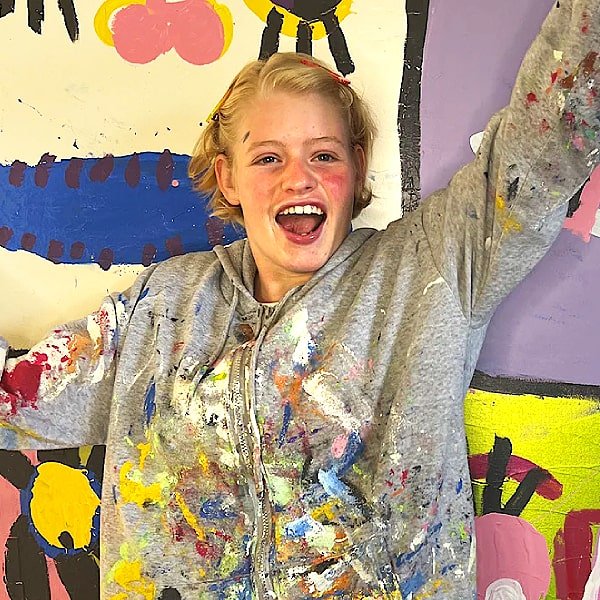

🟥 What are some artists or people that Clara admires the most, and why?
Frida Kahlo is Clara’s muse—she was actually the one who inspired her to start showing her art to the world. Frida’s resilience and the way she turned her pain into beauty really speaks to Clara. She also loves Basquiat, for his boldness and the way he broke rules with so much energy, and Van Gogh, because of the deep emotions and colors in his work.
More recently, Clara has been very inspired by Gregory Siff. She connects with the way he mixes storytelling, symbols, and emotions in his art.
🟥 If Clara could create a piece of art in collaboration with someone from history, who would you say she would choose and why?
Clara could create a piece of art with someone from history, it would definitely be Frida Kahlo. Frida has been her biggest inspiration from the very beginning. Clara feels a deep connection with the way Frida used art to express her struggles and turn pain into strength. Painting side by side with her would be like a dream come true—a meeting of two souls who both believe that being different is powerful.
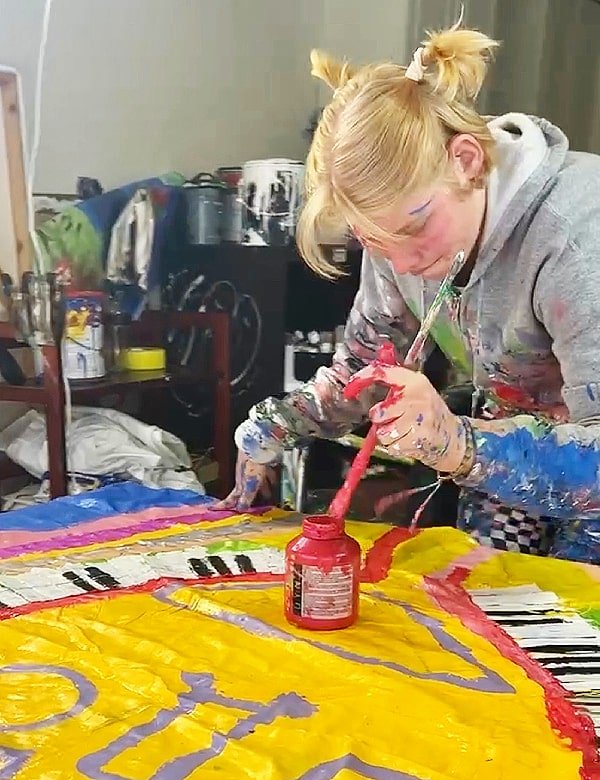
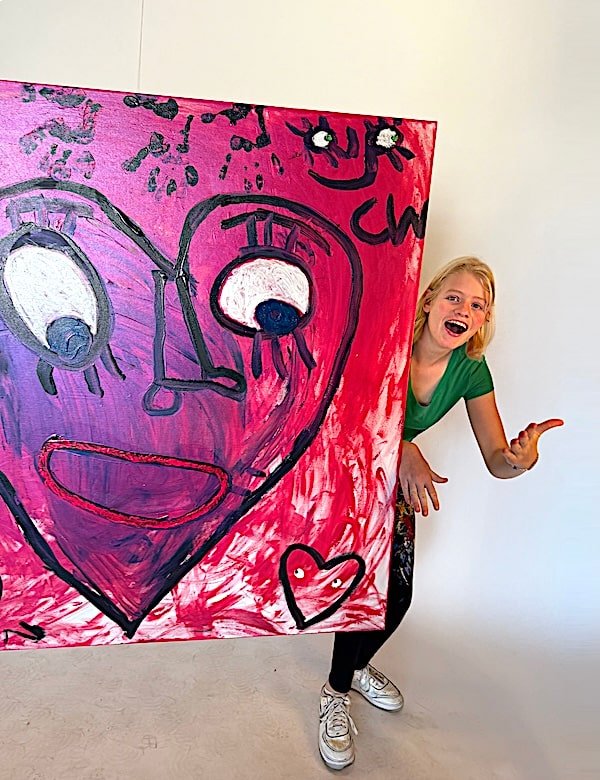
🟥 In your opinion, what is Clara’s superpower?
Clara’s superpowers are love and resilience. No matter what she goes through, she always finds a way to keep going and bring light to others. She has this gift of walking into a room and cheering everyone up with just her smile. And she’s incredibly sensitive to other people’s feelings—she can sense when someone needs kindness, and she gives it without hesitation.
🟥 As someone who has helped build a meaningful career for an artist, what advice would you give to aspiring artists and their families?
Artists’ minds are wonderful but also complicated to be around. My advice is, if you can, try to get as organized as possible from the beginning. Taking some courses in business management is a really good start—it gives you tools that help balance the creative side with the practical side. And then, if possible, find a manager or build a team that can support the artist. That way, the artist can focus on creating, while the team makes sure the career has a strong and sustainable foundation.
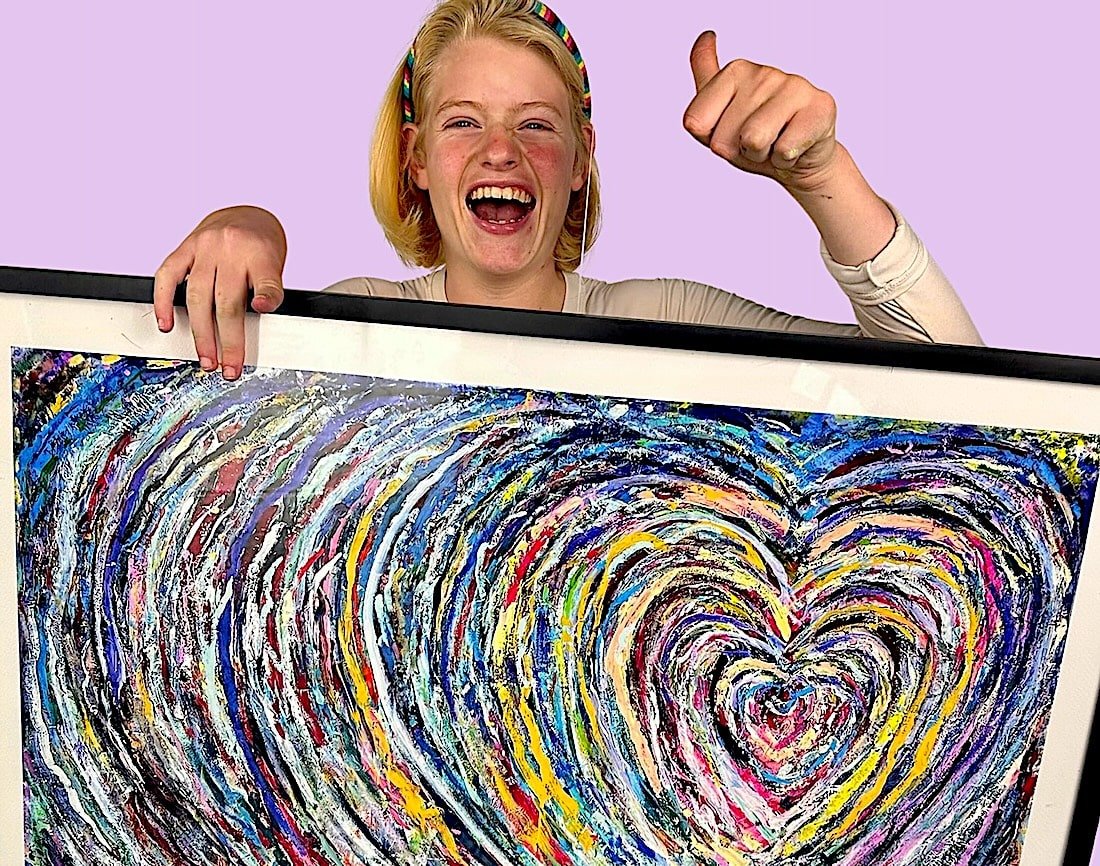
Relevant Links:
clarawoodscollection.com
Note: The answers given by the artist have been quoted verbatim without any editing to preserve the artist’s authentic voice for our readers.




